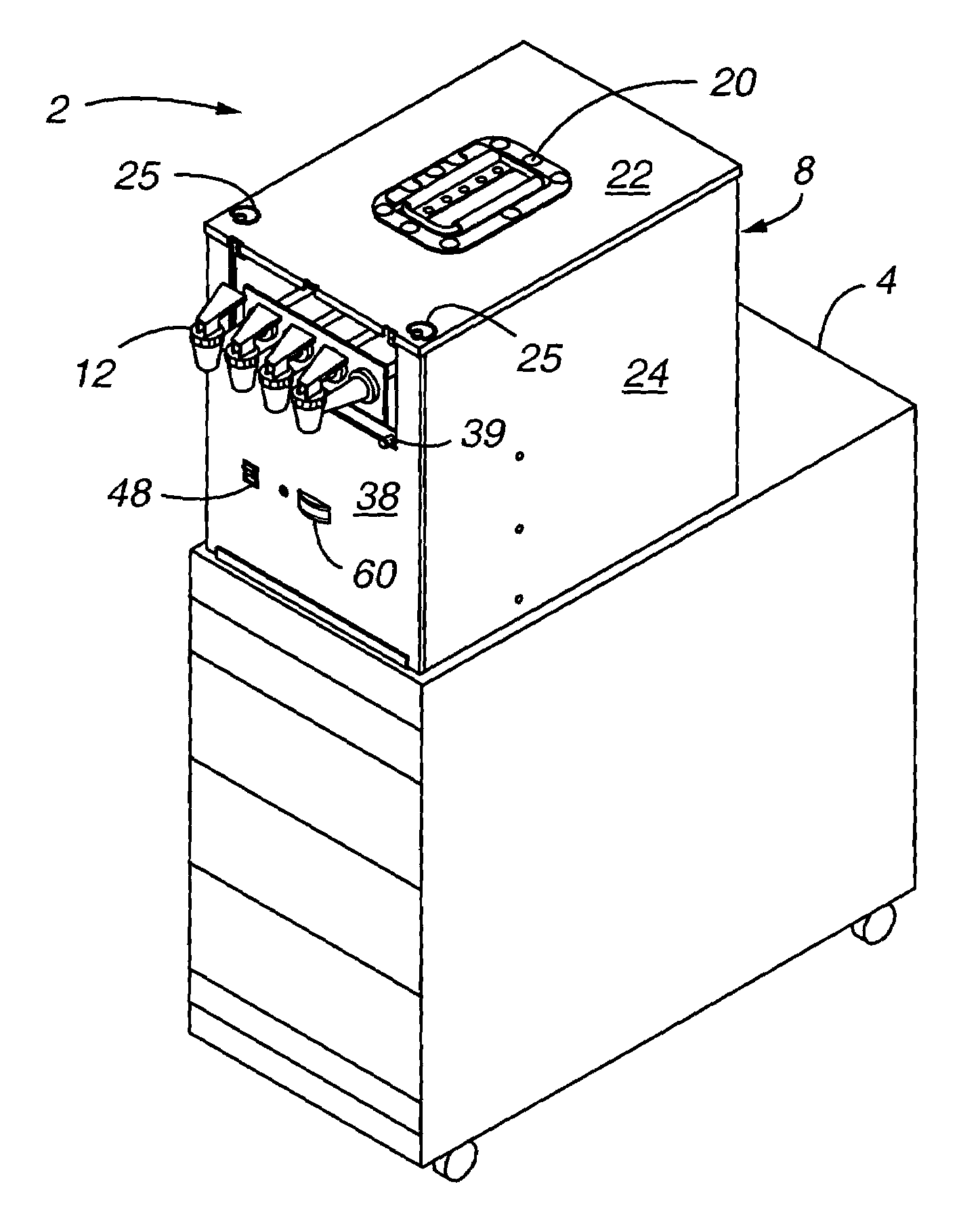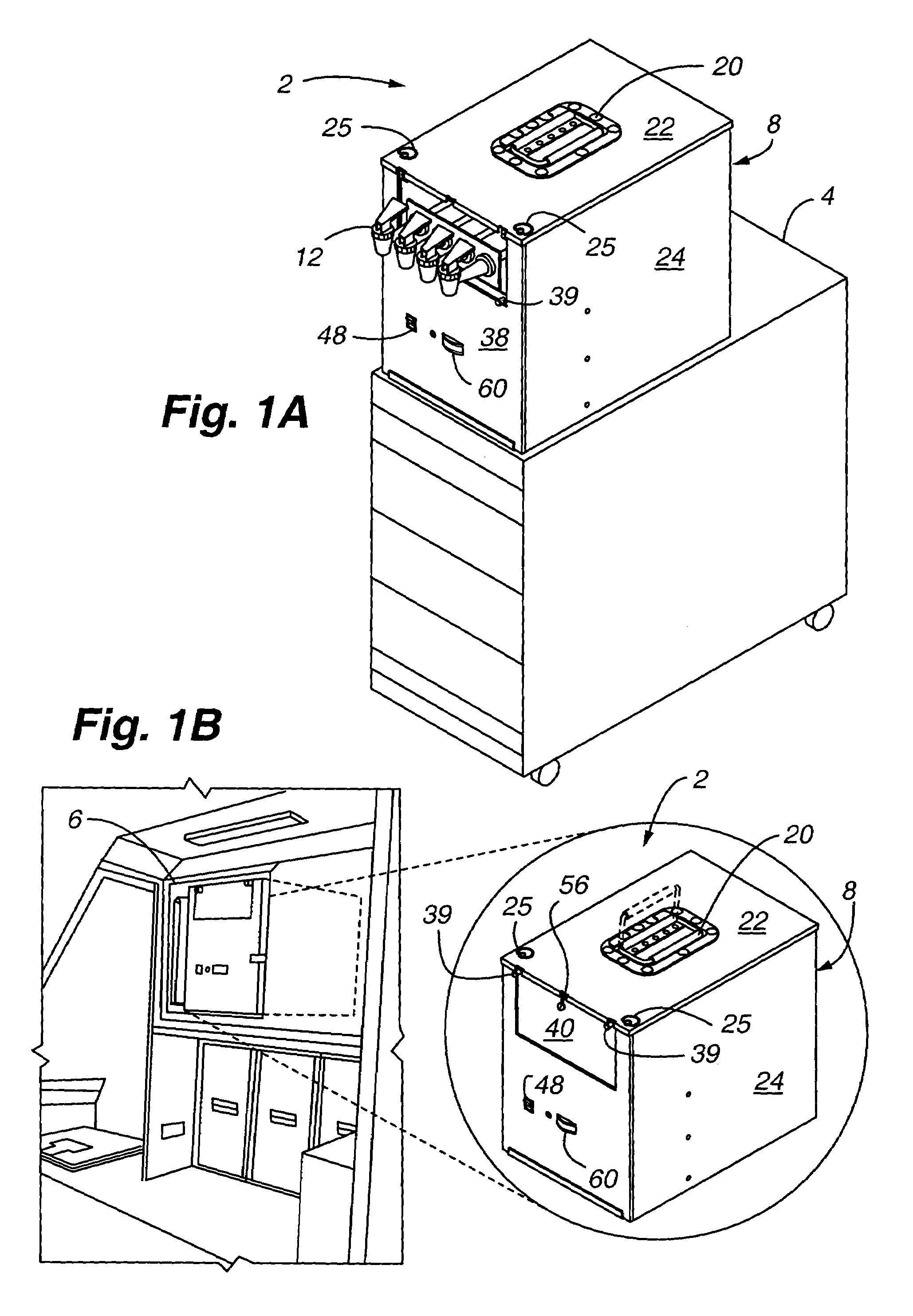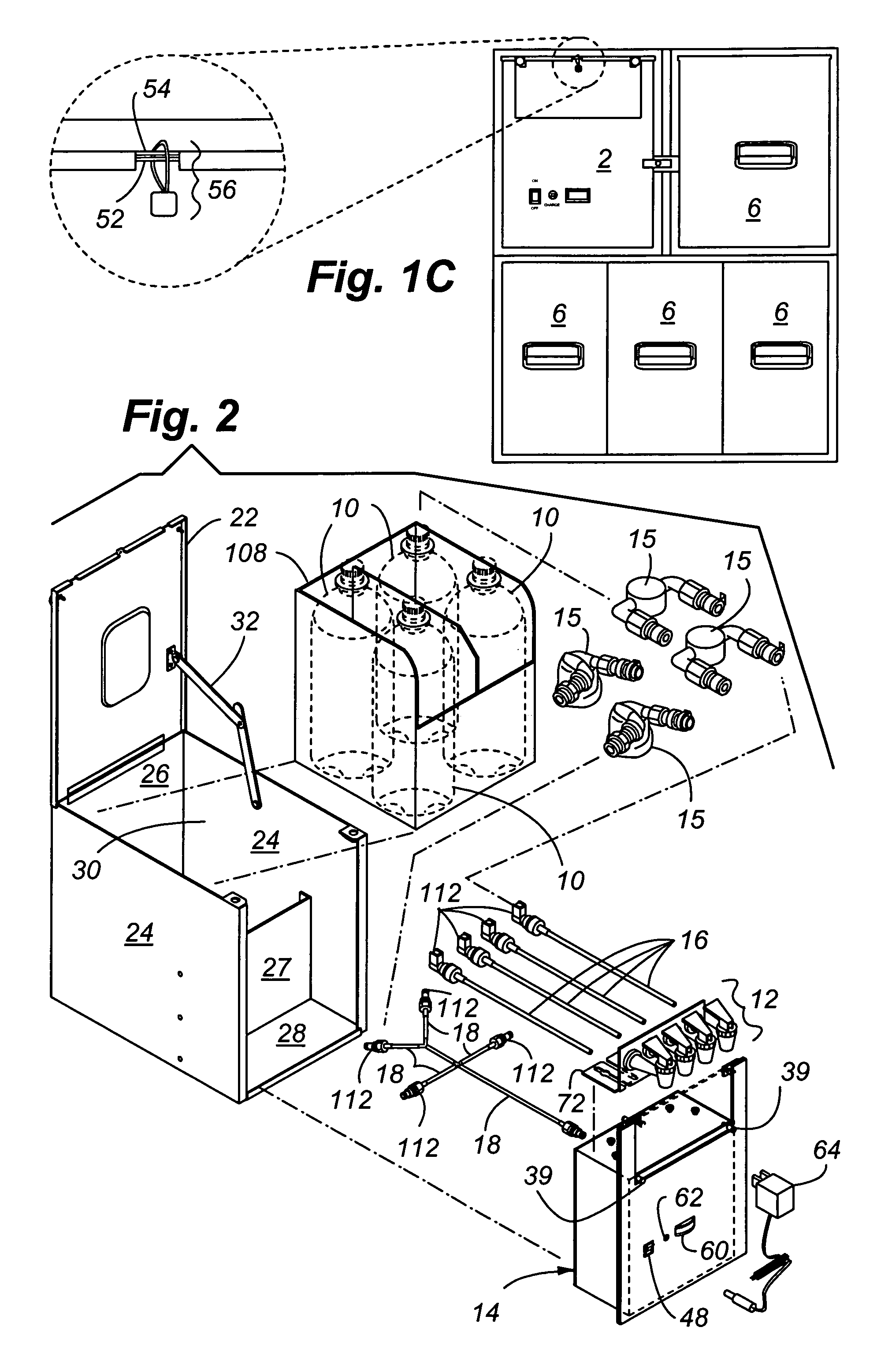Self-contained beverage dispensing apparatus
a beverage dispenser and self-contained technology, applied in the field of beverage dispensers, can solve the problems of hammering the airlines' ability to offer more effective and efficient beverage service, waste of time opening and closing such trays, and inconvenient use, so as to achieve convenient use, convenient change of containers, and convenient use.
- Summary
- Abstract
- Description
- Claims
- Application Information
AI Technical Summary
Benefits of technology
Problems solved by technology
Method used
Image
Examples
Embodiment Construction
[0051]The present invention recognizes the limited nature of traditional canned beverage service and offers, among other things, an improvement in terms of portability, safety, efficiency, customer satisfaction, and cost savings. While this invention is susceptible of embodiments in many different forms, there are, as shown in the drawings and will herein be described in detail, preferred embodiments of the invention. The reader is to understand that the present disclosure is to be considered as an exemplification of the principles of the invention and is not intended to limit the broad aspects of the invention to the embodiments illustrated.
[0052]Referring now to the drawings, FIG. 1A depicts an isometric side view of one embodiment of the beverage dispensing apparatus 2 in use with an airline beverage service cart 4. As can be appreciated by one skilled in the art, the beverage dispensing apparatus 2 can be made in varying heights according to the needs of the user. For example, i...
PUM
 Login to View More
Login to View More Abstract
Description
Claims
Application Information
 Login to View More
Login to View More - R&D
- Intellectual Property
- Life Sciences
- Materials
- Tech Scout
- Unparalleled Data Quality
- Higher Quality Content
- 60% Fewer Hallucinations
Browse by: Latest US Patents, China's latest patents, Technical Efficacy Thesaurus, Application Domain, Technology Topic, Popular Technical Reports.
© 2025 PatSnap. All rights reserved.Legal|Privacy policy|Modern Slavery Act Transparency Statement|Sitemap|About US| Contact US: help@patsnap.com



